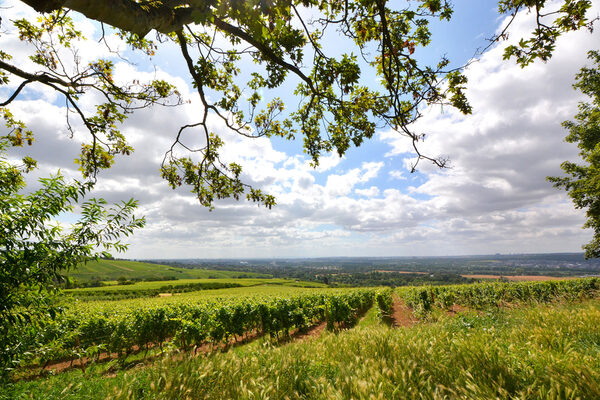A village between castle, wine and modernity
Frauenstein is characterized by its castle, viticulture, charming agriculture and rich history.
The castle
The origins of Frauenstein are inextricably linked to Frauenstein Castle. Around 1300, Siegfried IV von Frauenstein sold the castle and land to the Archbishop of Mainz. This sale secured the archbishop a strategic flank for the Rheingau and led to long-term disputes between the Electorate of Mainz and the Counts of Nassau. The Nassau farms around the village prevented Frauenstein from expanding for centuries.
Over the years, several noble families acquired shares in the castle and built magnificent half-timbered houses in the village. The Schönbornsche Hof (1571) and the Falkersche Hof (1573) are among the most important and oldest buildings in Frauenstein.
Viticulture in Frauenstein
Winegrowing in Frauenstein has a long tradition dating back to the 13th century. The vineyards "Im Marschall", which were already documented at that time, are particularly noteworthy. Most of the vineyards belonged to the Archbishopric of Mainz and were cultivated by local farmers on a leasehold basis. Numerous vineyards still exist today, such as "Im Herrenberg" and "Uff dem Sand", which was mentioned as early as 1699. Viticulture was not only economically decisive, but also an important part of Frauenstein's cultural identity.
The parish
In 1544, Frauenstein separated from the mother parish of Schierstein and became an independent parish. The Catholic church, dedicated to St. George and St. Catherine, was originally a chapel. Between 1505 and 1540, it was converted into a hall building with a ridge turret. When Frauenstein became a parish, it was granted the right to perform baptisms, weddings and funerals.
The decay of the castle
In the 18th century, the castle, which had never been exposed to major military threats, slowly began to fall into disrepair. By the end of the century, the decay was already well advanced. In 1803, Frauenstein fell to the Count of Nassau, who abolished serfdom in 1808 and granted the inhabitants freedom of movement. In this context, "freedom of movement" refers to the right to choose one's place of residence and workplace without restriction.
From Prussia to modern times
Frauenstein became Prussian in 1866. In 1871, it was incorporated into the newly founded district of Wiesbaden. In 1848, the mayor replaced the mayoress as head of the village, which led to a stronger administrative unit. From this time onwards, a lively club life developed. The first male choral society was founded in 1872. The gymnastics club followed in 1884 and the winegrowers' association in 1898. The volunteer fire department was founded in 1904. Frauenstein was connected to the water and gas supply in 1926 - an important step towards the modernization of the town.
Incorporation into Wiesbaden
Frauenstein was finally incorporated into Wiesbaden in 1928. This step initially met with resistance from the population, but brought numerous improvements, especially in terms of infrastructure and connections to the city. Despite the incorporation, Frauenstein retained its village character and continued to develop.
Historical highlight
Next to St. George's Church stands the thousand-year-old lime tree, also known as the "blood lime tree". According to legend, a lord of the castle killed his daughter's lover who wanted to flee with her. She planted the lime tree out of grief.
